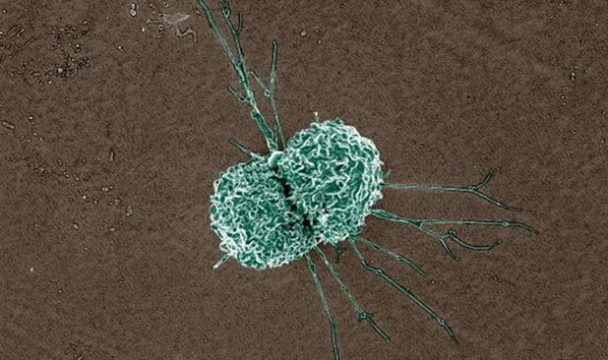Advertisment
Advances in laparoscopic transplantation

Mr Nizam Mamode, Guy’s and St. Thomas’ NHS Foundation Trust and Great Ormond Street Hospital, London.
by Mr Nizam Mamode – Transplantation, especially renal transplantation, now seems a fairly straightforward technique. A kidney is removed, usually laparoscopically, then implanted in pretty much the same way it has been for the last 6o years. The surgery is now routine, and the really exciting advances involve T cells, genes with long and complicated numbers, and a whole bank of new monoclonals. Getting excited about surgical advances in transplantation is so 1970s, a decade that many want to forget.
Wrong. After decades without change, the 21st century transplant surgeon is sensing the first stirrings of a surgical revolution. The first laparoscopic donor nephrectomy was described 17 years ago, but this minimally invasive approach to kidney procurement has now become routine, with the majority of donor operations now performed laparoscopically in the UK. There are few, if any, absolute contraindications to this technique, and outcomes are excellent, with either of the two main techniques (hand-assisted or total laparoscopic nephrectomy). Donor recovery is quick, with a short hospital stay, and as this technique leaves its grumpy teenage years behind it’s hard to conceive of how it can improve – after all, we still need a small incision to remove the kidney, don’t we?
The pioneers of natural orifice surgery (NOTES) would disagree. The principle is to use existing orifices (mouth, vagina or anus) to remove an organ and thus avoid any significant scar. A laparoscopic procedure is carried out, and the organ (say a gallbladder) is placed in a small bag within the abdomen, and this is extracted through one of the orifices – the astute will have recognised that this requires additional intracorporeal incisions into the stomach, rectum or vagina. A gallbladder is fairly small and can be squeezed and pummelled in order to extract it – a live donor kidney is a different matter. Nevertheless, live donor nephrectomy with vaginal extraction and only three 5 – 10mm abdominal scars has been successfully performed by Bob Montgomery’s group at John Hopkins and others, in 2010. Clearly there are issues regarding vaginal trauma and longer term sequelae, but some donors may opt for this even if there are small additional risks.
An alternative approach is to use an abdominal single-site approach (LESS-laparo-endoscopic single site surgery). This involves a small (4-5cm) periumbilical incision, which usually gives an excellent cosmetic result. All instruments and the camera are inserted through a single, specially designed port; these are all designed to allow an approximation to the triangulation necessary for conventional laparoscopic surgery. A number of centres have reported using this technique for donor nephrectomy, and initial results from a US trial suggest there may be some advantages over laparoscopic donor nephrectomy.
New technology is also being developed to allow real time visualisation of the kidney vasculature during nephrectomy, with laparoscopic ultrasound probes or MRI, but perhaps the most significant technological advance is robotics. The da Vinci robot, which has been available for a decade or so, allows the surgeon to sit at a console and control intra-abdominal, laparoscopically-placed instruments by moving finger and thumb, which have small rings placed over them. Vision is provided by a binocular eyepiece at the console. These features confer several advantages – precision, since movements can be scaled up by the software and tremor is avoided, 3-D vision – a huge bonus in laparoscopy, and most importantly partial restoration of the natural flexibility of wrist and elbow movement which is a normal feature of open surgery but is lost in laparoscopy. Robotic operations do not require the surgeon to be in the same room or even the same country as the patient; transatlantic operations have been reported and the Pentagon is working on a robotic pod to be dropped into the battlefield, with operating surgeons remaining in the safety of their home hospital. The da Vinci system has been used by many centres for laparoscopic donor nephrectomy and indeed robotic–assisted laparoscopic donor nephrectomy with vaginal extraction has been reported by an Italian group.1
Far more exciting is the use of robotics to allow minimally invasive kidney implantation. The key issue with using laparoscopic techniques to implant the kidney is the longer warm time due to the difficulty of performing the vascular anastomoses laparoscopically. Early reports of laparoscopic implantations from Spain in 2010 described a long and difficult operation, and many were unsure whether this could be done. But the group in Chicago have used the robot to implant around 50 kidney transplants, using a laparoscopic approach with a 6cm incision, and have concentrated on obese recipients who would otherwise have a large incision.
Earlier this year, Pranjal Modi from Ahmedabad in India, reported having implanted over 100 kidney transplants laparoscopically, and two of these involved insertion of the organ transvaginally – in other words, the recipients were left with only two 10mm incisions, and one or two 5mm incisions.
There were still problems with this technique, most notably a long warm ischaemic time, but the writing on the wall is clear; minimally invasive renal transplantation has arrived. Refinements of the technique, and subsequent proof of benefit through suitably sized randomised trials will of course be essential, but there is little doubt that in a few years open surgery for transplantation will be uncommonly performed. Maybe in this case, the revolution will be televised.
Reference:
- Pietrabissa A, Abelli M, Spinillo A, Alessiani M, Zonta S et al. Am J Transplant 2010 Dec; 10(12): 2708-11. doi: 10.1111/j.1600-6143.2010.03305.x.





